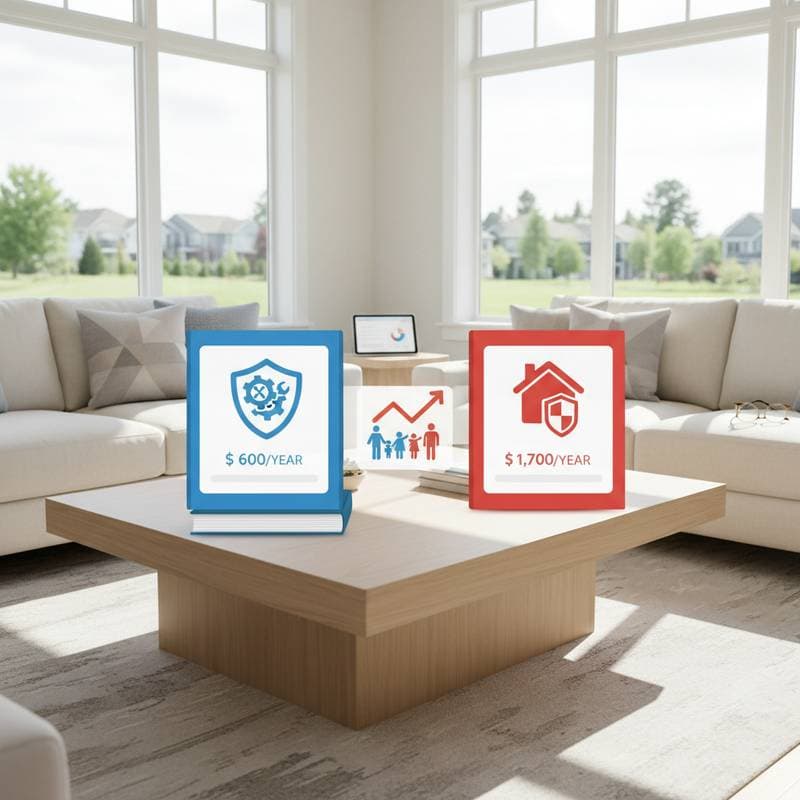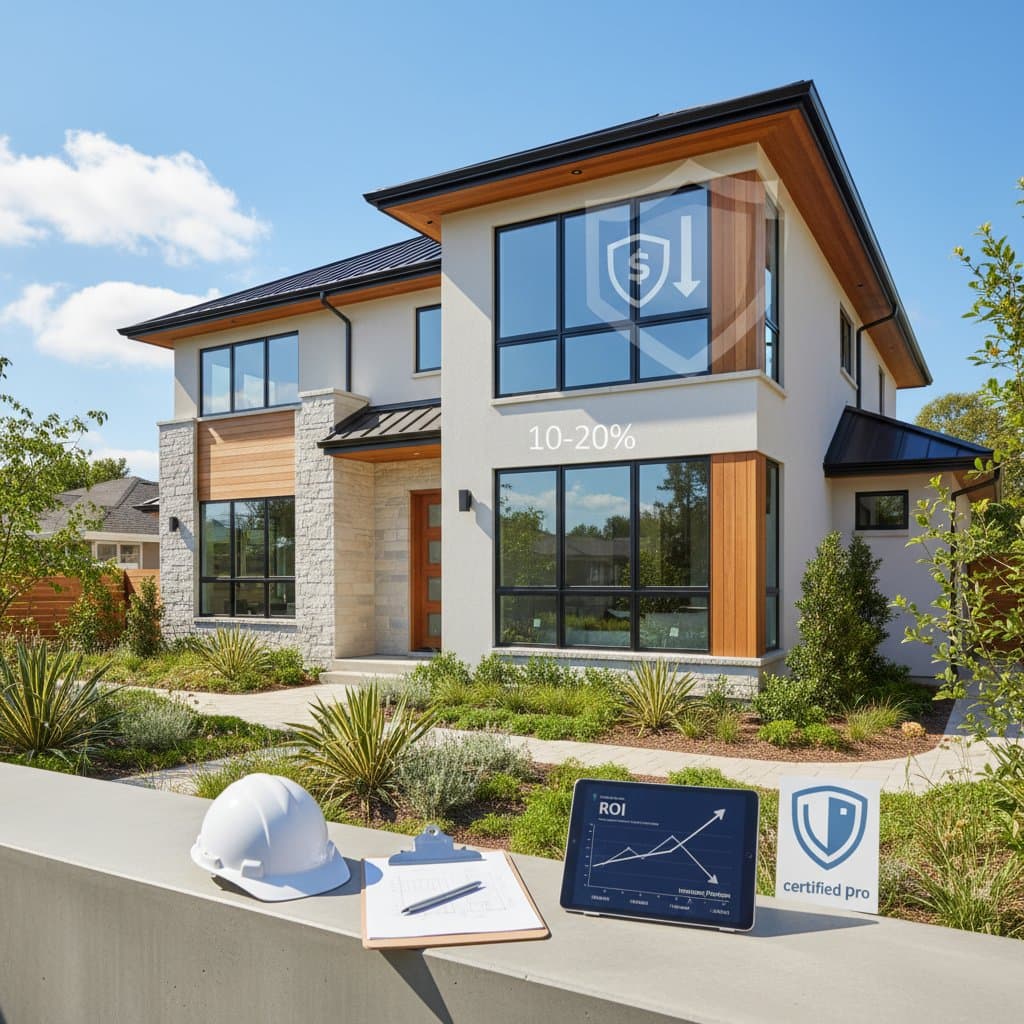How Much Does Rental Coverage Cost? Complete Landlord Protection Guide
Rental coverage protects landlords from financial losses due to property damage, tenant issues, or system failures. Professional landlord insurance and warranty plans range from $400 to $1,200 per property annually, with most landlords paying about $750 for standard coverage.
Three primary factors influence the final cost: property size, coverage type, and location risk profile. Larger units and high-risk areas raise premiums, while bundled home warranty plans lower total expenses by up to 20 percent. Landlords with comprehensive rental coverage save an average of 30 percent on out-of-pocket repair costs, according to the National Association of Residential Property Managers.
Comprehensive protection for rental investments ensures steady income, quicker repairs, and peace of mind. Landlords managing one unit or several properties benefit by focusing on portfolio growth rather than unexpected expenses.
Detailed Cost Breakdown
Rental coverage costs vary by provider, location, and plan type. For a single-family rental property, monthly premiums range from $35 to $100, based on the package and deductible.
Primary Pricing Structure
Most landlord policies use a per-property model. Basic liability policies begin at $350 annually per property, while full packages with home warranty add-ons average $700 to $1,000. Multi-unit properties qualify for volume discounts of 10 to 15 percent.
At the 25th percentile, costs reach about $400 for minimal coverage on newer units in low-risk areas. The median, or 50th percentile, falls near $750. At the 75th percentile, expenses climb to $1,200 or higher for older properties or high-value homes needing extensive protection.
Size and Scope Factor
Each additional rental unit adds roughly $200 to $300 per year, depending on coverage limits. Insuring four units at $700 each totals $2,800 annually, but bundling reduces that to $2,400.
Smaller apartments in managed complexes often receive lower rates due to shared maintenance. Large single-family homes with detached garages or extra structures demand extended coverage.
Material and Quality Tiers
Entry-level coverage includes property damage, liability, and limited loss-of-rent protection. These plans cost $400 to $600 annually and fit landlords with newer properties or reliable tenants.
Mid-range coverage, priced at $700 to $900, incorporates appliance protection, plumbing, and HVAC warranties. Providers such as American Home Shield or Choice Home Warranty offer 24-hour service and discounted repairs, appealing to many landlords.
Premium coverage surpasses $1,200 annually and covers major systems, roof leaks, and eviction assistance. Options from Liberty Mutual and State Farm provide replacement cost coverage, reimbursing full repair values instead of depreciated amounts to boost long-term returns.
Complexity Variables
Properties over twenty years old face 15 percent higher premiums due to aging plumbing, wiring, and HVAC systems. Insurers assess these components during underwriting.
Accessibility challenges, like narrow driveways or remote sites, increase repair costs from added travel time. Local building codes impact pricing; properties needing frequent inspections require higher liability limits.
Regional factors play a role too. Urban landlords in high-cost markets pay 25 percent more than rural owners, driven by elevated replacement values and claim rates.
Service Types and Comprehensive Pricing
Basic Landlord Coverage
Standard policies cover property damage from fire, storms, or vandalism; liability for tenant or visitor injuries; and loss-of-rent during vacancies. Annual pricing spans $400 to $650, with $250 in liability and $200 in structural protection.
These plans suit modern units with low turnover and minimal maintenance.
Comprehensive Landlord Warranty Packages
Premium packages extend to major systems and appliances, including HVAC, plumbing, electrical; kitchen and laundry items; roof leaks and foundations; plus legal and eviction support. Costs range from $900 to $1,200 annually, a 25 to 40 percent increase over basic plans.
Such coverage cuts repair expenses by up to $2,000 yearly, justifying the investment for owners of multiple properties.
Add-On Services Matrix
| Add-On Service | Average Cost | Benefit |
|---|---|---|
| Pest control coverage | $80 per year | Avoids infestation-related losses |
| Sewer and water line protection | $120 per year | Prevents major plumbing expenses |
| Smart home monitoring | $60 per year | Enhances security and rentability |
| Legal assistance coverage | $150 per year | Reduces eviction and dispute costs |
Bundling add-ons saves 10 to 20 percent over separate purchases. Platforms like HomeAdvisor or Angi help compare quotes and identify warranty discounts.
Professional vs. DIY Analysis
DIY Cost Breakdown
Self-insuring involves buying materials for fixes: a plumbing kit costs $45; electrical outlet replacement, $30; paint and patch supplies, $60; appliance parts, $70 to $150. Tools add $200 to $300, plus over 20 hours monthly in time.
Delayed repairs lead to lost rent, pushing annual opportunity costs above $1,000.
Professional Advantages
Professional plans deliver savings through 48-hour service guarantees, minimizing complaints and revenue gaps. Repairs include workmanship warranties valued at hundreds per claim.
Coverage handles liability risks up to $100,000 per incident, meets lender standards, and provides claim support to cut administrative burdens.
Decision Framework
Opt for professional coverage with multiple units, older systems, or high turnover. DIY works for new properties with stable occupancy, but major repairs or legal issues erase savings. Insured landlords face fewer surprises and retain tenants better.
Actionable Cost-Saving Strategies
Timing Optimization
Enroll during slow real estate periods for up to 15 percent discounts on renewals and warranties. Midweek maintenance scheduling trims service fees by 5 to 10 percent.
Smart Shopping Tactics
Obtain quotes from three providers and review exclusions. Tools like Policygenius and Insureon streamline comparisons. Annual payments save $50 to $100 per plan.
Update outdated systems before activation to lower risk ratings and premiums.
Preparation Actions
- Document property condition with photos.
- Address minor repairs to prevent claim denials.
- Maintain a log of upkeep to show proactive management.
These measures cut quotes by up to 10 percent and speed approvals.
Market Dynamics and Considerations
Geographic Variations
Costs rise 20 to 30 percent in coastal or high-crime areas from higher claims. Rural spots offer lower premiums but limited providers.
Metro areas like New York, Los Angeles, and Chicago show indexes over 120, indicating 20 percent above national averages.
Market Timing
Inflation and shortages elevate repair costs, leading to premium adjustments. Annual policy reviews keep rates current.
Labor shortages in HVAC and plumbing delay claims; select providers with robust contractor networks for reliable service.
Value Indicators
Full coverage boosts ROI by safeguarding income and value. Protected properties avoid emergencies and vacancies, raising net rental income 8 to 12 percent yearly via loss prevention and maintenance efficiency.
Building a Reliable Protection Network
Rental coverage forms a layered approach of insurance, warranties, and maintenance. Successful landlords integrate it into their investment strategy as essential protection, not an extra cost.



